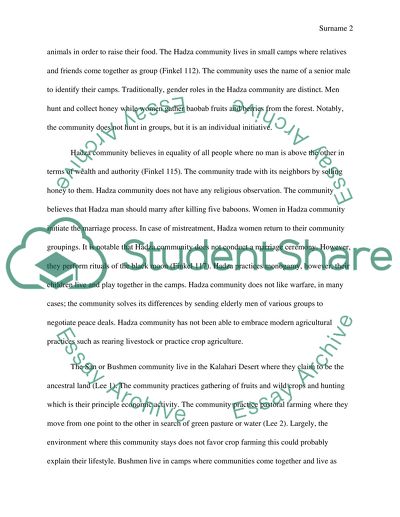Cite this document
(“Culture Comparison: Hadza and San Research Paper”, n.d.)
Retrieved from https://studentshare.org/history/1396283-comparison
Retrieved from https://studentshare.org/history/1396283-comparison
(Culture Comparison: Hadza and San Research Paper)
https://studentshare.org/history/1396283-comparison.
https://studentshare.org/history/1396283-comparison.
“Culture Comparison: Hadza and San Research Paper”, n.d. https://studentshare.org/history/1396283-comparison.


